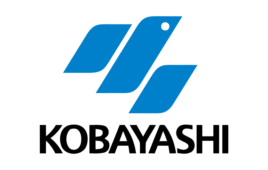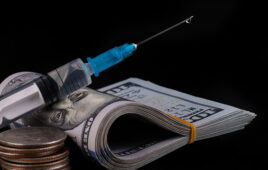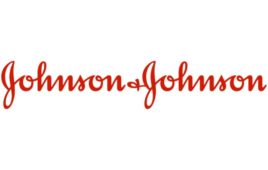In the U.S. we are accustomed to trusting that the medications we take are real and not fake. But incidents of counterfeiting reported by drug makers have increased steadily over the last decade to more than 1,700 worldwide last year. Although only six percent of these were in the U.S.,1 this comes at a time when many of the largest U.S. drug manufacturers are mired in serious quality and regulatory issues. The World Health Organization estimates that the worldwide market for counterfeit drugs topped 430 billion U.S. dollars a year2
Counterfeit drug rings operate across borders and rake in billions of dollars every year. This is costing legitimate drug makers a small fortune in lost sales, all the while putting patients at risk of unknowingly taking counterfeit drugs. Experts estimate hundreds of thousands of people around the world die because of counterfeit medicines each year.
The USFDA defines counterfeit drugs as a “drug which, or container or labeling of which, without authorization, bears the trademark, trade name, or other identifying mark, imprint, or device, or any likeness thereof, of a manufacturer, processor, packer, or distributor other than the person or persons who in fact manufacture, processed, packed, or distributed such drug and which thereby falsely purports or is represented to be the product, or to have been packed or distributed by, such other drug manufacturer, processor, packer, or distributor.”
 Figure 1 shows the escalation of cases the agency is dealing with. The FDA has not taken the issue lightly and has formed a new office focused specifically on the issue of counterfeit drugs. The Office of Drug Security, Integrity and Recalls (ODSIR), is equipped with resources to address supply chain threats such as intentional adulteration, cargo theft and diversion. This new division considers the problem through the entire lifecycle of a product: from drug components through to the finished dosage for delivery to the patient.
Figure 1 shows the escalation of cases the agency is dealing with. The FDA has not taken the issue lightly and has formed a new office focused specifically on the issue of counterfeit drugs. The Office of Drug Security, Integrity and Recalls (ODSIR), is equipped with resources to address supply chain threats such as intentional adulteration, cargo theft and diversion. This new division considers the problem through the entire lifecycle of a product: from drug components through to the finished dosage for delivery to the patient.
Anti-Counterfeiting Technology
There is no magic bullet that can address the threats to the supply chain. A framework for a structured risk assessment across each key step of the supply chain is the first step in identifying risks. Luckily today, the available technologies are mature and cost effective. The FDA has published several guidance’s targeted specifically at Track and Trace technology; both serialization of drug packaging4 and the use of physical-chemical identifiers5 are well established anti-counterfeiting measures.
Track and Trace Technologies
The potential suite of solutions within each of these guidances is broad. From individual dosage form identifiers that immediately flag a counterfeit drug at the dosage form level, to track and trace sensor solutions that surreptitiously indicate they have been tampered with are available in the marketplace. The following technologies are mature and represent tangible deterrents to drug counterfeiting:
 1. RFID – The promise of RFID is undeniable, but it is important to understand its technological limitations before launching into an RFID implementation. RFID tags can be grouped into four basic categories: passive tags, semi-passive tags, semi-active tags and active tags. Passive tags are by far the mostly broadly implemented and span several market sectors. They are designed to simply store data that can be read by a reader and are the lowest priced technology – costing pennies a tag. Semi-passive tags use power for sensors and can transmit as a passive platform when queried by a reader. Semi-active tags can initiate transmission but do not stay on all the time. Finally, we come to active tags. These typically come equipped with a lithium battery and can emit a signal periodically. The sky is the limit for these tags in terms of pricing: they can easily cost from $20 to $150 per unit. Examples of RFID technology are shown in Figure 2.
1. RFID – The promise of RFID is undeniable, but it is important to understand its technological limitations before launching into an RFID implementation. RFID tags can be grouped into four basic categories: passive tags, semi-passive tags, semi-active tags and active tags. Passive tags are by far the mostly broadly implemented and span several market sectors. They are designed to simply store data that can be read by a reader and are the lowest priced technology – costing pennies a tag. Semi-passive tags use power for sensors and can transmit as a passive platform when queried by a reader. Semi-active tags can initiate transmission but do not stay on all the time. Finally, we come to active tags. These typically come equipped with a lithium battery and can emit a signal periodically. The sky is the limit for these tags in terms of pricing: they can easily cost from $20 to $150 per unit. Examples of RFID technology are shown in Figure 2.
 2. Tamper Evident Labels – Two types of tamper evident seals are used to indicate tampering; self-destructive labels and stealth RFID labels. Self-destructive labels are designed to fall apart if someone tries to remove them; stealth RFID labels utilize a secondary RFID signature that changes if the label is moved. This is transparent to the adulterer but can be flagged upon receipt using a proprietary reader.
2. Tamper Evident Labels – Two types of tamper evident seals are used to indicate tampering; self-destructive labels and stealth RFID labels. Self-destructive labels are designed to fall apart if someone tries to remove them; stealth RFID labels utilize a secondary RFID signature that changes if the label is moved. This is transparent to the adulterer but can be flagged upon receipt using a proprietary reader.
 3. PUF Technology – PUF stands for Physical Unclonable Function and is a chip technology that takes advantage of the fact that every silicon chip has a unique and instantaneous signature. PUF technology has been used for high value assets by the military and represents a very highly secure solution.
3. PUF Technology – PUF stands for Physical Unclonable Function and is a chip technology that takes advantage of the fact that every silicon chip has a unique and instantaneous signature. PUF technology has been used for high value assets by the military and represents a very highly secure solution.
 4. 2D and 3D Bar Coding – By far the most broadly implemented Track and Trace solution in the pharmaceutical industry is 2D bar coding. 2D bar codes encode data both horizontally and vertically: they have limited security and are easily duplicated. 3D bar codes are engraved or applied and are much more difficult to duplicate.
4. 2D and 3D Bar Coding – By far the most broadly implemented Track and Trace solution in the pharmaceutical industry is 2D bar coding. 2D bar codes encode data both horizontally and vertically: they have limited security and are easily duplicated. 3D bar codes are engraved or applied and are much more difficult to duplicate.
 5. Holograms – Holograms are used broadly within the pharmaceutical industry as a sign of authenticity. Unfortunately, in many of the emerging markets counterfeiters create packaging that is superior to the branded drug and use holograms as their label of quality. Holograms use alight signature to authenticate. Hologram technology has evolved rapidly to the point that QR codes and even other holograms can be placed within a hologram, making duplication very difficult if not impossible. Examples of holographic security labels that include secondary verification technology are shown in Figure 6.
5. Holograms – Holograms are used broadly within the pharmaceutical industry as a sign of authenticity. Unfortunately, in many of the emerging markets counterfeiters create packaging that is superior to the branded drug and use holograms as their label of quality. Holograms use alight signature to authenticate. Hologram technology has evolved rapidly to the point that QR codes and even other holograms can be placed within a hologram, making duplication very difficult if not impossible. Examples of holographic security labels that include secondary verification technology are shown in Figure 6.
6. Bar Code within an Image – One of the most innovative track and trace solutions is to use a bar code embedded within a label or image. Pharma companies in many high risk markets have successfully deployed this technology in combination with a decoy barcode. Counterfeiters duplicate the diversionary barcode without realizing that the true identifier bar code is embedded in the logo or other image on the label. Serialization technology can easily be employed for this application.
 7. Synthetic DNA Signature – Another effective and broadly used track and trace solution is synthetic DNA. This is custom fabricated to be invisible to the naked eye but visible by a specific light frequency. The readers are inexpensive and easy to use. Synthetic DNA solutions are inexpensive and limitless in terms of their combinations.
7. Synthetic DNA Signature – Another effective and broadly used track and trace solution is synthetic DNA. This is custom fabricated to be invisible to the naked eye but visible by a specific light frequency. The readers are inexpensive and easy to use. Synthetic DNA solutions are inexpensive and limitless in terms of their combinations.
8. Serialization – In March of 2010 the FDA issued its guidance on serialization defining the concept of a Standardized Numerical Identifier (SNI). Europe has been requiring SNIs for years now. The decision by California’s pharmacy board to push back its e-pedigree requirement provides the industry the chance to implement the necessary systems to comply. SNI solutions go far beyond the technology itself. Subsumed with the decision to implement a SNI scheme are the following activities:
• Establishing a security framework for data exchange,
• Record retention policies,
• Implementation of SNIs at the pallet and case level,
• Standardized chain-of-custody data to be tracked by logistical units,
• Standardized electronic data exchange format,
• Data carriers with specific encoding formats identified,
• Guidelines for reporting exceptions noted by supply chain participants, and
• Hierarchy of the SNIs expected in a shipment.
Mandatory serialization will be here sooner rather than later and developing the necessary support systems as part of an anti-counterfeiting strategy will position an organization to meet the impending e-pedigree requirements in 2015.
Conclusion
As the pharmaceutical supply chain continues to expand across the globe, the risks to supply chain will continue to escalate. Simple risk management approaches are highly effective in identifying weak links in the supply chain that represent a risk to product safety, quality, integrity, purity and potency. Track and trace solutions have matured to a point where they can cost-effectively address counterfeiting, adulteration and drug diversion risks across the global drug substance and drug product supply chain.
References
1. M. Perrone, AP, USA Today, Counterfeit Drugs Becoming Big Business Worldwide, Feb. 2012
2. AP, Pharmaceutical Companies Fund Interpol Fight Against Fake Prescription Drugs, March 2013
3. I. Bergeman, FDA Effrts: Counterfeit Drugs , CDER, FDA, Apha Annual Meeting , March 2013
4. FDA Guidance for Industry Standards for Securing the Drug Supply Chain – Standardized Numerical Identification for Prescription Drug Packages, March 2010
5. FDA “Guidance for Industry Incorporation of Physical-Chemical Identifiers into Solid Oral Dosage Form Drug Products for Anticounterfeiting”, October 2011.




